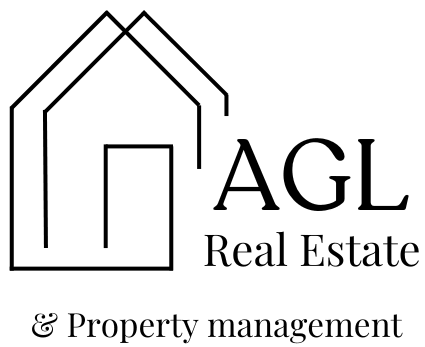As we move into the second quarter of 2025, the Greater Phoenix real estate market is showing signs we don’t often see—it's leaning into a slightly buyer's market. For those familiar with Phoenix’s real estate trends, this is a relatively rare occurrence. Over the long term, our market has been predominantly seller-driven, but current conditions are giving buyers more room to negotiate.
Let’s break down what’s happening and what it means for you.
🔍 Market Overview
We’re seeing increased inventory, more negotiation leverage for buyers, and stable to slightly softening prices in certain price ranges. Sales activity has slightly decreased year-over-year, but the overall pricing picture remains fairly steady. Some neighborhoods are holding strong, while others are showing more flexibility.
Inventory is Up
One of the most significant shifts: inventory has jumped nearly 50% compared to 2024. That’s a big deal. With more homes on the market, buyers have more options, and sellers are having to compete a bit more—especially on condition and pricing.
New listings during the last week of March were up 16% year-over-year, another clear indicator that the supply side of the equation is more robust.
🏡 Market by Area
The Greater Phoenix region is not one-size-fits-all. Here's a closer look at how different cities are performing:
Strongest Seller Markets:
-
Chandler
-
Paradise Valley
-
Scottsdale
These areas continue to show resilience and demand, thanks to lifestyle appeal, location, and higher-end inventory that retains strong buyer interest.
Buyer's Market Areas:
-
Buckeye
-
Queen Creek
-
Maricopa
Buyers in these cities are in a good position right now. Increased supply means more opportunity to negotiate not just price, but also repairs and concessions like roof replacements or AC system upgrades.
Balanced Markets:
-
Mesa
-
Cave Creek
In these areas, neither side has a clear advantage. It’s more about price sensitivity and condition of the home.
Slight Seller’s Markets:
- Phoenix, Tempe, Fountain Hills
Overall, pricing and negotiating power varies by neighborhood, zip code, and price point. If you’re buying or selling, the details matter—this is where working with a local expert becomes essential.
💵 What’s Happening with Prices?
Overall, pricing has remained relatively stable, though we’ve seen slight softening in some segments, and growth in others. Here’s a breakdown by price tier:
-
Under $400,000: Price per square foot has gone down 📉 . Increased supply and affordability constraints are playing a role here.
-
$500,000 to $800,000: Prices have remained about the same ➡️ year-over-year.
-
$800,000 to $1 million: We’re seeing a slight dip of about 1.6% 📉 in price per square foot from 2024 to 2025.
-
$1 million to $3 million: Prices have increased by about 2% to 2.5% 📈 , showing solid resilience in the mid-luxury market.
-
Over $3 million: This ultra-luxury category saw a 1.1% price increase 📈 , and interestingly, the number of sales in this tier skyrocketed—up 74% from March 2024 to March 2025.
📊 Sales Activity
Looking at sales volume gives even more insight:
-
Over $3 million: Sales volume is up a massive 74%.
-
$800,000 to $1 million: Sales are up 7%.
Despite these increases in specific segments, overall sales are down slightly, about 3% lower than last year. That said, this minor dip hasn't drastically impacted the overall market value—just adjusted the dynamics slightly.
⏳ Days on Market (DOM)
Here’s some good news for sellers: days on market have dropped.
-
Average DOM is now 34 days, down from 46 at the beginning of the year.
-
Homes priced over $1 million are averaging 39 days on market, which is relatively brisk considering the price point.
This is a positive sign for market activity and buyer urgency. Properties are still moving when priced and marketed correctly.
🔨 What are some items Buyers Can Negotiate
With more inventory and slightly cooler buyer activity in some areas, we’re seeing buyers successfully negotiate for:
-
Roof repairs or replacements
-
HVAC system upgrades
-
Credits or concessions at closing. Real estate compensation.
-
And occasionally, price reductions—especially if buyer demand doesn’t pick up further in Q2
🏢 A Note About Condos
If you own—or are looking to purchase—a condo, be aware of Fannie Mae’s "blacklist" of certain complexes. Some communities have been flagged due to shared insurance issues or deferred maintenance, which is impacting loan eligibility and slowing down sales.
If you're unsure whether a specific complex is impacted, definitely reach out. This can be a make-or-break factor in closing successfully.
Final Thoughts
While the beginning of 2025 has felt a bit lighter in pace, we’re still in a healthy, active market. With more inventory and steady pricing, it’s a good time for buyers to explore options—and for sellers to stay competitive and realistic.
And remember: every market is hyperlocal. Your neighborhood, zip code, and price point all matter.
Whether you're thinking about buying, selling, or just want to understand how your home's value is holding up, I’m here to help.
📞 Call or text me at 480-747-7162
📧 Arnaud Lavigne | AGL Real Estate
Let’s talk strategy—because timing, knowledge, and local expertise are everything in this evolving market.



